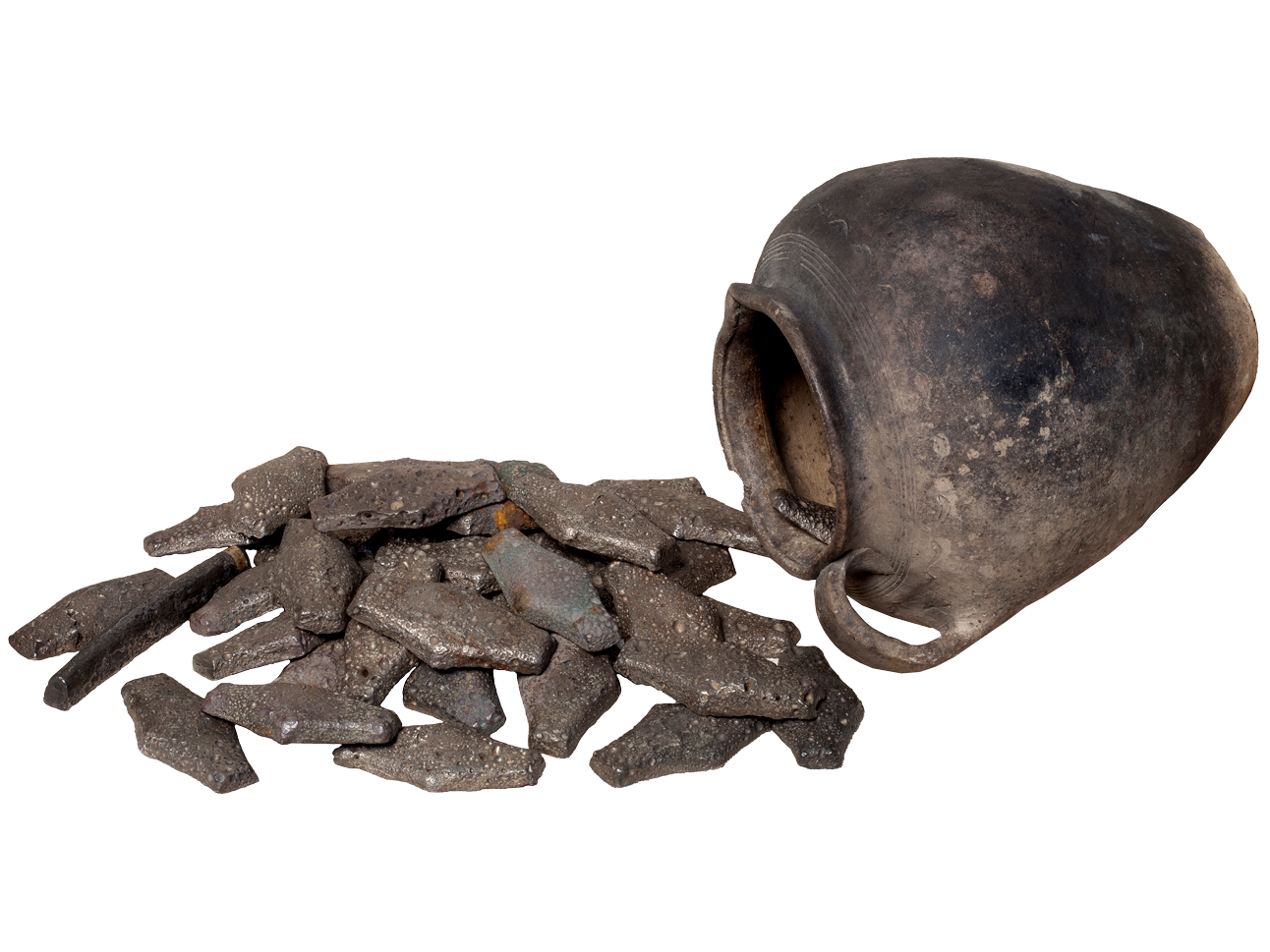Hoard of grivnas

The hoard was found during the earthwork while laying of a foundation of the xenial house in the enclosure of the St. Michael's Golden-Domed Monastery in Kiev. The hoard lay in a clay pot and contained 56 silver bars – grivnas.
Grivnas are silver bars that were a kind of the monetary-weight means of the Ancient Rus’. The hoard contained 53 grivnas of “Kiev’s” and 3 of “Novgorodian” type.
In history of Russian currency circulation there is a period that is known in special literature as “coinless” (XII-the first half of the XIV century). With the end of the tributary of Westeuropean denarii and Arabic dirhems to Rus’ that had no own silver exploitations, the major form of metal “money” became big inconvertible silver bars. They had a limited character of circulation and were used only in large payments. Bars were mainly laying in treasuries and hidings than used in market circulation; that is why single-findings are rare, that can not be said about hoards. This form of money can witness the high level of wealth concentration in hands of a ruling elite. The role of a small monetary unit was performed by money substitutes as Volhynian shale spindle-whorl, glass bracelets, beads, furs and etc.
Silver bars in Rus’ were called grivnas, sizes and shapes of them were different. The earliest grivnas – “Novgorodian” and “Kiev’s” appeared in the end of the XI century. Novgorodian ingots had an elongated shape – in the form of a bar (a stick) of a semi-oval or sub-triangular section, weighing about 200 grams, Kiev’s-rhombic, hexagonal shape, weighing about 160 grams.
On the territory of the Ancient Rus’ existed also some other kinds of grivnas: “Chernigov’s” – in a shape of a flattened oblong rhombus, “Volga’s” grivna – in a shape of a boat with raised sides, in weight both were close to the “Novgorodian”; “Lithuanian” – a stick-like bar of a semi-oval section with deep cuttings on a convex side, weighing about 105 grams.
Old Russian grivnas of all types were made by casting in open moulds. The quality of silver in monetary grivnas was high, oriented to 960 alloy of silver.
